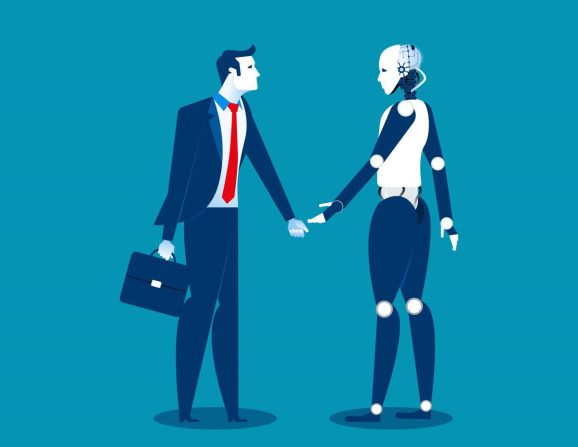When lingerie brand Cosabella announced that it’d moved away from its digital marketing agencies in favor of artificial intelligence, companies across the board took note. The two aspects of its decision that got the most attention were revenue (how much money did AI produce?) and personnel ( how many people did AI replace? ).
copyright by venturebeat.com
 These two questions go hand in hand because, perhaps contrary to belief, not all companies are jumping at the opportunity to replace staff with autonomous technology. They’re eager to hear about AI’s potential to scale their productivity and revenue and work at a pace that can’t be achieved by human teams alone. But they’re often cautious when it comes to how AI will ultimately transform jobs we no longer need to new ones that we do.
These two questions go hand in hand because, perhaps contrary to belief, not all companies are jumping at the opportunity to replace staff with autonomous technology. They’re eager to hear about AI’s potential to scale their productivity and revenue and work at a pace that can’t be achieved by human teams alone. But they’re often cautious when it comes to how AI will ultimately transform jobs we no longer need to new ones that we do.
Making time for interesting tasks
In the case of Cosabella, technology created as many jobs as it replaced. It freed up the company’s internal and external marketing teams from gathering, processing, and responding to data, and shifted their focus to creative and strategy. It revealed the need for high-frequency delivery of new creative assets, in order to combat consumers’ creative fatigue, and thereby created more demand for creative professionals. And it gave rise to a new form of human-robot collaboration, where technology focused on the data aspects of marketing and humans focused on the emotional and subjective aspects.
Early adaptors lead the way
This transformation is not unique to AI in marketing. Neither is the emergence of hybrid man-machine teams in the workplace and beyond. In a recent Wall Street Journal article, Ken Goldberg, professor of industrial engineering and operations at U.C. Berkeley, noted a growing trend toward multiplicity, or diverse groups of people and machines working together to solve problems. Of interest is the fact that these teams follow a somewhat gestaltist dynamic, where man and machine produce better outcomes when working together than either produces when working on its own.
Early AI adopters like Cosabella are setting this theory into action as man-machine teams emerge across industries. They’re not only giving us insight into how these teams work and what they look like; they’re also offering early feedback that is likely to shape the entire trajectory of the industry. […]
read more – copyright by venturebeat.com


When lingerie brand Cosabella announced that it’d moved away from its digital marketing agencies in favor of artificial intelligence, companies across the board took note. The two aspects of its decision that got the most attention were revenue (how much money did AI produce?) and personnel ( how many people did AI replace? ).
copyright by venturebeat.com
Making time for interesting tasks
In the case of Cosabella, technology created as many jobs as it replaced. It freed up the company’s internal and external marketing teams from gathering, processing, and responding to data, and shifted their focus to creative and strategy. It revealed the need for high-frequency delivery of new creative assets, in order to combat consumers’ creative fatigue, and thereby created more demand for creative professionals. And it gave rise to a new form of human-robot collaboration, where technology focused on the data aspects of marketing and humans focused on the emotional and subjective aspects.
Early adaptors lead the way
This transformation is not unique to AI in marketing. Neither is the emergence of hybrid man-machine teams in the workplace and beyond. In a recent Wall Street Journal article, Ken Goldberg, professor of industrial engineering and operations at U.C. Berkeley, noted a growing trend toward multiplicity, or diverse groups of people and machines working together to solve problems. Of interest is the fact that these teams follow a somewhat gestaltist dynamic, where man and machine produce better outcomes when working together than either produces when working on its own.
Early AI adopters like Cosabella are setting this theory into action as man-machine teams emerge across industries. They’re not only giving us insight into how these teams work and what they look like; they’re also offering early feedback that is likely to shape the entire trajectory of the industry. […]
read more – copyright by venturebeat.com
Share this: